What is golfer’s elbow (also known common flexor tendinopathy or medial epicondylitis)?
Golfer’s elbow causes pain and tenderness on the inside of the elbow. Golfer’s elbow is common in manual workers and those that play racquet sports and lift heavy weights. It does not only occur in those that play golf! It is relatively easy to diagnose and a diagnostic ultrasound can confirm the severity of your condition and whether or not there is a tear in the tendon. This can affect how long it will take you to recover and the optimal treatment for your condition. Exercise based treatment in the form of physiotherapy has been shown to be the most effective intervention for golfer’s elbow. However, if you have a tear in your tendon or your pain is not improving, shockwave treatment or injection therapy such as platelet rich plasma (PRP) or steroid injections can be an effective treatment modality for golfer’s elbow.
What are the symptoms of golfer’s elbow pain?
The symptoms of golfer’s elbow are:
- Pain, point tenderness and occasional swelling on the bone and muscles on the inside of the elbow
- Pain that is made worse by gripping and repetitive wrist movements
- Extreme pain if you hit the inside of your arm against a wall or door
If this sounds like your pain, read on…
What other conditions can mimic golfer’s elbow pain?
If this does not sound like your pain there are other conditions that can mimic the pain of golfer’s elbow such as:
- Cubital tunnel syndrome
- Tennis Elbow
- Posterior Interosseus Nerve (PIN) entrapment
Golfer’s elbow versus tennis elbow
Golfers elbow causes pain and tenderness on the inside of the elbow, whereas tennis elbow causes pain and tenderness on the outside of the elbow. The pain associated with both golfer’s elbow and tennis elbow are aggravated by gripping and lifting. However, golfers’ elbow is aggravated by moving the wrist down and tennis elbow by moving the wrist up i.e. cocking the wrist.
The anatomy
Golfer’s elbow is the most common cause of pain to affect the inside (medial aspect) of the elbow (see image above).
Located at the tip of the ulnar (the bony bit on the inside of the elbow) is the the medial epicondyle. The medial epicondyle is the bony attachment of the flexor muscles of the forearm i.e. the muscles responsible for curling your wrist upwards (see above picture).
The forearm flexor muscles converge onto the medial epicondyle where they create a single tendon known as the common flexor tendon.
These muscles that converge for the common flexor tendon:
- Flexor carpi radialis
- Flexor carpi ulnaris
- Flexor digitorum superficialis
- Palmaris longus
Golfer’s elbow occurs when the muscles that flex the wrist are placed under increased strain/load, commonly due to heavy lifting or repetitive movements over a prolonged period of time. This causes the common flexor tendon to become swollen and painful. This is known as tendinitis (also known as medial epicondylitis). Over time repeated episodes of tendinitis can compromise the healing process of the tendon causing it to become thickened and warm. This is known as a tendinopathy or medial epicondylalgia.
How do you know if you have golfer’s elbow?

Golfer’s elbow is much less common than tennis elbow (pain located over the outer elbow), in fact it has been shown to be 20 times less common (Svernlov et al, 2011). Ironically, most people we see with this condition have never hit a golf ball in their life!
Golfer’s elbow is often described as a sharp burning located over the inner aspect of the elbow. Initially symptoms are intermittent, occurring after manual tasks such as digging, carrying bags or weightlifting in the gym. Early symptoms usually only last for a few weeks if you can stop your aggravating factors (i.e. the activities that cause the pain). However, we understand this is not always possible. Over time, flareups can become more frequent causing elevated pain levels affecting all activities of daily living.
Common symptoms of golfer’s elbow are:
- Pain located on the inside of the elbow (see image below) – this area is normally very tender to touch and extremely panful if you knock it on something.
- Pain with gripping, lifting and carrying activities.
- Feeling of weakness with gripping tasks or making a fist.
- Pain with tasks such as opening and closing jars or pouring kettles.
- Pain with repetitive tasks such as sawing, drilling and screwing.
- Pain with sporting activities which involve gripping such as golf, tennis
How is golfer’s elbow diagnosed?
If you feel you may have golfer’s elbow it is recommended that you seek professional advice.
Golfer’s elbow can be diagnosed by your physiotherapist at your first appointment. Your clinician will take a full and detailed history of your symptoms, revealing how your pain started and what aggravates and eases your symptoms. A series of clinical tests will be carried out to assess your shoulder, wrist, elbow and your grip strength. We will also palpate (feel) your elbow to locate the centre of your pain.
Real-time diagnostic ultrasound imaging will be used to assess the quality of your tendon and the severity of you condition. Ultrasound is able to determine if you have tendinitis, tendinopathy and/or a tendon tears or rupture (De Maeseneer et al, 2015). Gaining an accurate diagnosis is essential to ensure you receive the most effective treatment for you.
There are other conditions that can mimic the pain of a golfer’s elbow. These include:
- Cubital tunnel syndrome
- Osteoarthritis of the elbow
- Ulnar collateral ligament sprain
- Referral from the neck and/or shoulder
Complete has a team of highly skilled physiotherapists who are all fully trained musculoskeletal sonographers. All clinicians are experienced in the assessment and diagnosis of elbow pain.
How is golfer’s elbow treated?
Golfer’s elbow can be slow to recover and therefore it is important treatment starts as soon as possible. The vast majority of patients with golfer’s elbow respond well to conservative treatment.
Conservative treatment of golfer’s elbow is ideally overseen by a physiotherapist and involves:
- Advice on activity modification
- Forearm strengthening exercises
- Forearm stretching exercises
- Acupuncture
- Sports taping
- Forearm soft tissue techniques e.g. deep tissue massage
Here are a few top tips you may like to try yourself:
- Try to modify activities that aggravate your symptoms – this may involve taking regular breaks and dividing a job into smaller manageable tasks.
- Purchase an ‘epiclasp’ band (see below left image) – this may help reduce tension at the elbow whilst using your wrist and elbow muscles.
- Gentle wrist and elbow stretches
- Apply a small bag of frozen peas (wrapped in a towel) over the elbow after activities that irritate your symptoms.
- Try using anti-inflammatory gel such as Voltarol. Speak to your pharmacist first.

What if conservative management does not work?
If your pain is not improving and you have had the pain for several months there are a few further treatment options available to you. These include:
Extracorporeal Shockwave Treatment (ESWT)
Shockwave is a non-invasive, evidence-based treatment option which is a clinically effective for treating tendon pain. It works by delivering a dose of controlled microtrauma via a series of strong repetitive sound waves, aimed directly at the tendon. This triggers the body’s natural healing process. Local nerve endings are also desensitised resulting in a reduction in pain. Patients require a minimum of three sessions (ideally one week apart). All clinicians at Complete are fully qualified and experienced delivering shockwave. If you would like more information concerning shockwave treatment please contact us on 0207 4823875 or email info@complete-physio.co.uk.
Ultrasound Guided Injection Therapy
If your pain remains, is getting worse and conservative management has not been successful then injection therapy may be appropriate for you.
Injection therapy is indicated if:
- Pain that is affecting ability to sleep or waking you at night.
- Pain that is stopping you from completing normal tasks such as washing and dressing, cooking or leisure activities.
- Pain that is limiting your ability to engage in a physiotherapy rehabilitation.
An injection is used to reduce the pain and inflammation associated with golfer’s elbow. It provides a ‘window of opportunity’ to allow you to rehabilitate your elbow in a painfree environment. It is recommended that a course of physiotherapy commences within 1-2 weeks of the injection.
Current research has revealed that injections completed under ultrasound guidance are more accurate at targeting the effected treatment and more effective at reducing pain than landmark guided injections (Daniels et al, 2018). All injections at Complete are carried out using ultrasound guidance.
What type of injections are appropriate for your golfer’s elbow?
Ultrasound-guided corticosteroid injection
Corticosteroid injections (also known as steroid injections) are routinely used to treat persistent golfer’s elbow pain. Real-time ultrasound imaging is used to deposit a combination of corticosteroid (powerful anti-inflammatory medication) and a short-acting local anaesthetic (numbing agent) directly to the affected area. Corticosteroid injections are used to effectively reduce pain and increase function for patients suffering with golfers’ elbow (Banffy et al, 2012). Corticosteroid injections are used for patients in acute/severe pain.
Ultrasound-guided hyaluronic acid injection
Hyaluronic acid is a synthetic replica of a naturally occurring substance found within the body. It has powerful anti-inflammatory properties and is used, in combination with a local anaesthetic, as an alternative to steroid. Hyaluronic acid injections are used for the more chronic, grumbly tendon pain i.e. less acute/severe.
Ultrasound-guided platelet rich plasma (PRP) injections.
PRP injections have been shown by research to be highly effective at increasing function and providing pain relief for patients suffering from golfer’s elbow (Boden et al, 2018). PRP injections require a small amount of blood to be taken from the vein in your arm. Plasma is separated from other blood molecules by being spun, at high speeds, in a centrifuge machine before being reinjected in and around the tendon. Platelet rich plasma has powerful healing properties and when injected reinvigorates the body’s natural healing process. This allows the tendon to heal quickly and effectively. Research suggests for best results a course of three PRP injections are required to treat tendon pathologies, including golfers’ elbow.
If you would like to discuss this further or find out how we can help you, please email injections@complete-physio.co.uk or call 0207 482 3875.
Other elbow conditions:
References:
BANFFY, M.B., MD and ELATTRACHE, N.S., MD, 2012. Injection Therapy in the Management of Musculoskeletal Injuries: The Elbow. Operative Techniques in Sports Medicine, 20(2), pp. 124-131.
BODEN, A.L., SCOTT, M.T., DALWADI, P.P., MAUTNER, K., MASON, R.A. and GOTTSCHALK, M.B., 2019. Platelet-rich plasma versus Tenex in the treatment of medial and lateral epicondylitis. Journal of Shoulder and Elbow Surgery, 28(1), pp. 112-119.
DE MAESENEER, M., BRIGIDO, M.K., ANTIC, M., LENCHIK, L., MILANTS, A., VEREECKE, E., JAGER, T. and SHAHABPOUR, M., 2015. Ultrasound of the elbow with emphasis on detailed assessment of ligaments, tendons, and nerves. European Journal of Radiology, 84(4), pp. 671-681.
SVERNLÖV, B., HULTGREN, E., ADOLFSSON, L., ORTOPEDI OCH IDROTTSMEDICIN, LINKÖPINGS UNIVERSITET, HAND OCH PLASTIKKIRURGI, INSTITUTIONEN FÖR KLINISK OCH EXPERIMENTELL MEDICIN, HAND- OCH PLASTIKKIRURGISKA KLINIKEN, U S, CENTRUM FÖR KIRURGI, ORTOPEDI OCH CANCERVÅRD, SINNESCENTRUM, ÖSTERGÖTLANDS LÄNS LANDSTING, HÄLSOUNIVERSITETET and ORTOPEDKLINIKEN I LINKÖPING, 2012. Medial Epicondylalgia (Golfer’s Elbow) Treated by Eccentric Exercise. Shoulder & Elbow, 4(1), pp. 50-55.

